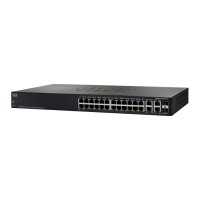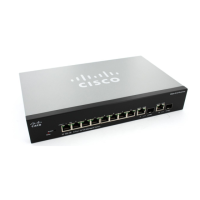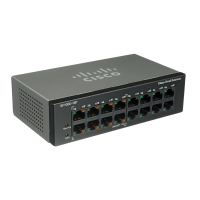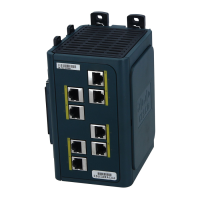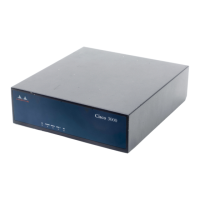IP Configuration
Overview
Cisco Small Business 200, 300 and 500 Series Managed Switch Administration Guide (Internal Version) 271
17
Loopback Interface
Overview
The loopback interface is a virtual interface whose operational state is always up.
If the IP address that is configured on this virtual interface is used as the local
address when communicating with remote IP applications, the communication will
not be aborted even if the actual route to the remote application was changed.
The operational state of a loopback interface is always up. You define an IP
address (either IPv4 or IPv6) on it and use this IP address as the local IP address
for IP communication with remote IP applications.
A loopback interface does not support bridging; it cannot be a member of any
VLAN, and no layer 2 protocol can be enabled on it.
The IPv6 link-local interface identifier is 1.
When the switch is in Layer 2 system mode, the following rules are supported:
• Only one loopback interface is supported.
• Two IPv4 interfaces can be configured: one on a VLAN or Ethernet port and
one on the loopback interface.
• If the IPv4 address was configured on the default VLAN and the default
VLAN is changed, the switch moves the IPv4 address to the new default
VLAN.
Configuring a Loopback Interface
To configure an IPv4 loopback interface, do the following:
• In Layer 2, enable Loopback Interface and configure its address in
Administration > Management Interface > IPv4 Interface page.
• In Layer 3, add a loopback interface in IP Configuration > IPv4 Management
and Interfaces > IPv4 Interface.
To configure an IPv6 loopback interface, do the following:
• In Layer 2, add a loopback interface in the Administration > Management
Interface > IPv6 Interfaces page. Configure the IPv6 address of that
interface in the Administration > Management Interface > IPv6 Addresses
page. This page is not available in SG500X, ESW2-550X and SG500XG
devices.
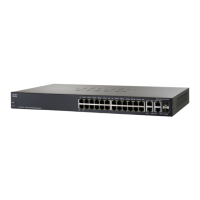
